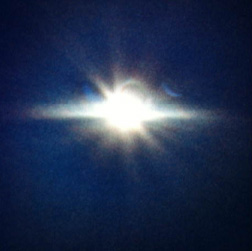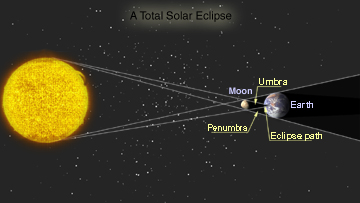Click on image for full size
Courtesy of NASA
Can an Eclipse Change Gravity? (Updated!)
News story originally written on September 20, 1999
It will take many more months before the verdict is in, but scientists are already contemplating some new information. The last solar eclipse of the millennium served as a great opportunity to test a phenomenon discovered by Maurice Allais in 1954. Allais believed that a solar eclipse can affect Earth's gravity.
David Doever of NASA's Marshall Space Flight Centre in Huntsville, and his partner, Ron Koczor, have received most of the data. Pendulums were set up in various countries, with some in the path of the eclipse and others not. Some of the preliminary results are interesting.
Video cameras taped the pendulum movements before, during and after the solar eclipse. Although no change was viewed in the pendulums outside of the eclipse path, two different sites in Europe revealed exciting results. These researchers, which were inside the path of the eclipse, discovered a change in the pendulum's path. If the results are correct, then another mystery was just created. Why would gravity change only in the areas under the eclipse' path?
"We haven't looked at their videos in detail yet, and we're not going to reach any conclusions just by eyeballing them," says Koczor, who's trying to organize the mountains of data. "If, in fact, pendulums go crazy during eclipses it suggests we don't really have an understanding of gravity and the intersection of different bodies."
Koczor says much of the data still needs to be analyzed, but the current results have stumped the scientific community. "It's easy if we see nothing," Koczor says. But if there's something there, "it's a different ball game."















